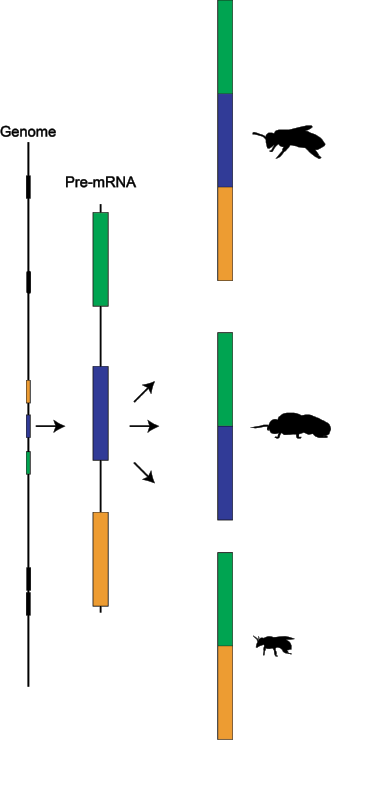Social species are among the most successful on the planet. Honey bees have colonized almost every continent, a range that results from both natural and artificial expansions. Our research program takes a bottom-up approach to understand how eusocial lineages evolve and the mechanisms through which adaptations occur. Ultimately, we strive to bridge the gaps in our understanding of genomics, the evolution of eusocial species, and the adaptive value of their behaviours.
An updated list of our publications can be found on Scholar.
Using Population Genomics to Identify Patterns of Adaptive Change in Eusocial Species
Which genes have contributed to adaptive change within and among eusocial lineages and how much adaptive change has there been? Our lab examines patterns of genetic variation across entire genomes to identify the molecular basis of eusocial behaviours
Evolution and Regulation of Social Immunity
Social species can protect themselves from pathogens and parasites altruistically. They can secrete compounds to limit pathogen growth, exclude themselves or nest-mates from all or part of the colony, remove or cannibalize infected or deceased nest-mates, and allo- or auto-groom. These responses can be very effective at eliminating the risk of epizootics.
Our lab uses honeybees as a model to explore how social immunity evolves and understand the genetic mechanisms that influence its expression.
Identifying the Role of Alternative Splicing in Regulating Social Life
Alternative splicing occurs when a single RNA molecule is processed into different functional and non-functional variants. Each variant can result in different downstream phenotypes.
Our lab explores how alternative splicing creates and maintains different social states within the bees and how these events evolve.
Engaging the Public and Applying Genomic Data to Industry
How can we use genomic (and other 'omics) data to benefit the beekeeping industry?
Our lab actively pursues means to incorporate new technologies for beekeepers to better understand and manage their stocks. These tools allow beekeepers to verify stock identity, speed up selective breeding, and identify locally adapted populations.



